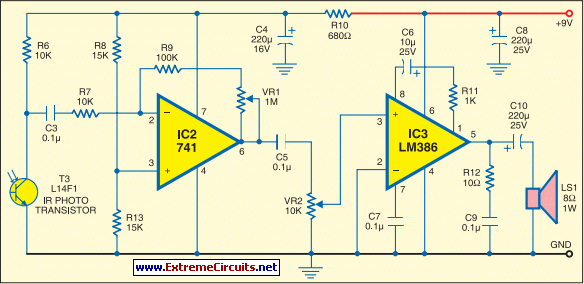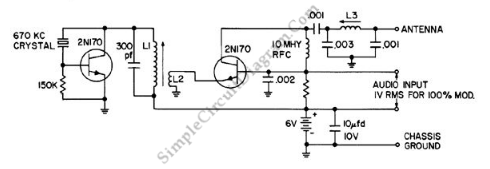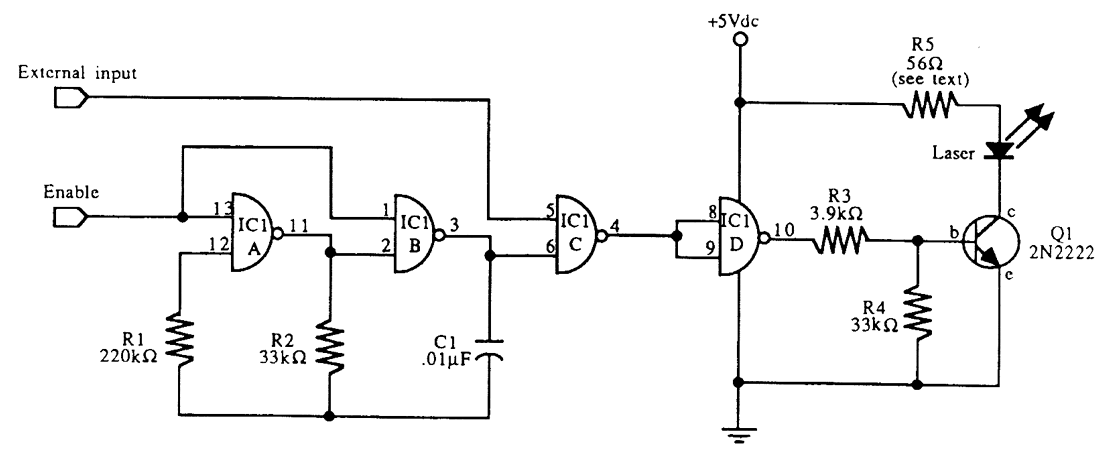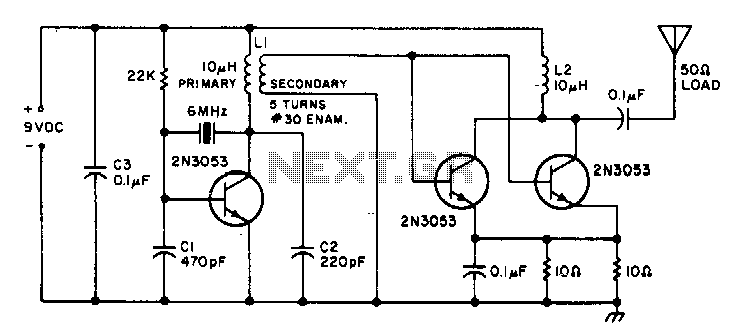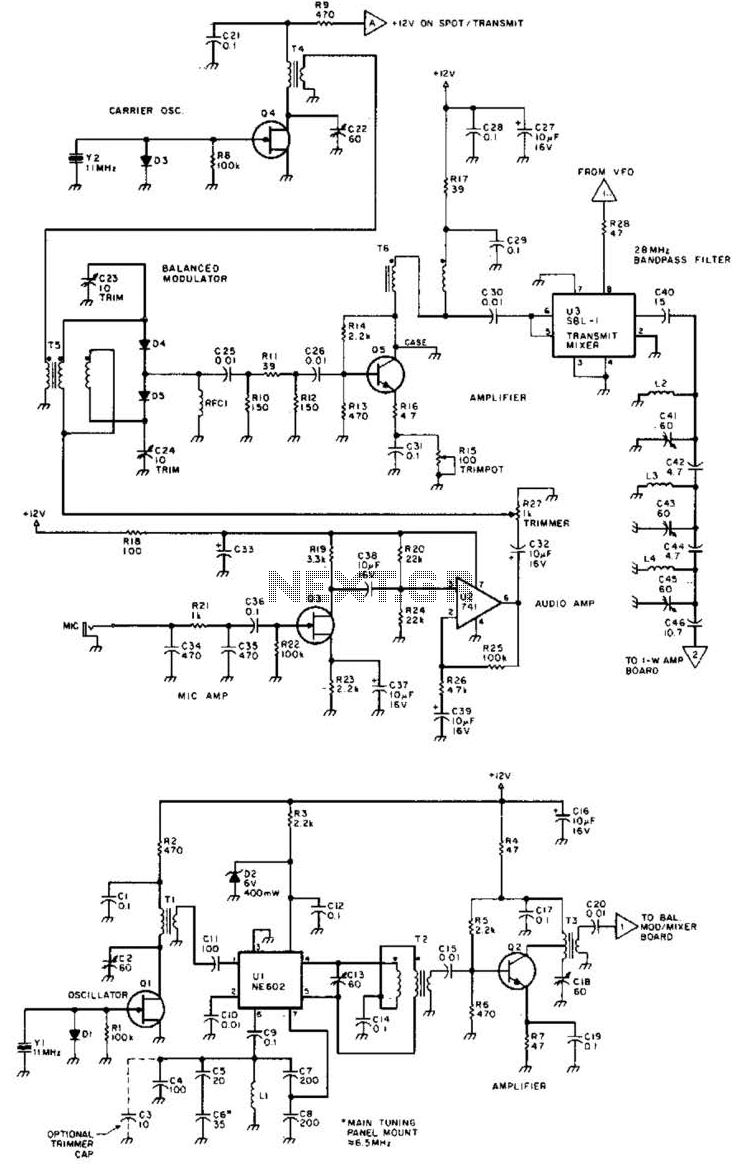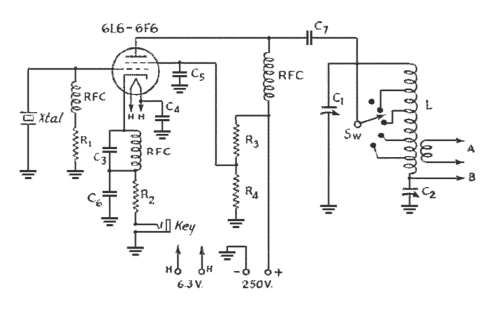
Long Range FM Transmitter
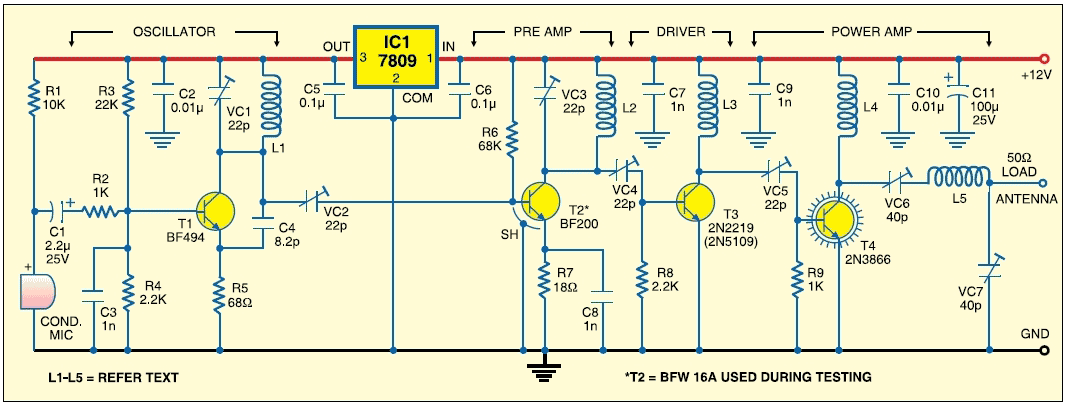
This is a highly stable, harmonic-free, long-range FM transmitter circuit designed for FM frequencies between 88 and 108 MHz. It is capable of covering a range of up to 5 km.
The FM transmitter circuit operates within the designated frequency band, ensuring compliance with FM broadcasting standards. The core of the circuit typically includes a voltage-controlled oscillator (VCO) that generates the desired frequency. The stability of the transmitter is enhanced by using high-quality components, such as low-noise transistors and precise capacitors, which minimize frequency drift.
To achieve harmonic suppression, the circuit may implement a band-pass filter that allows only the desired frequency to pass while attenuating unwanted harmonics. This feature is crucial for maintaining signal clarity and preventing interference with adjacent channels. The transmitter's output stage is designed to provide sufficient power to achieve the specified range of 5 km, often utilizing a class C amplifier for efficient operation.
Power supply considerations are also essential, as the circuit must maintain stable voltage levels to ensure consistent performance. Bypass capacitors are typically used to filter out noise from the power supply, further contributing to the overall stability of the transmitter.
A tuning mechanism, often in the form of a variable capacitor or an adjustable inductor, allows for fine-tuning of the output frequency, enabling the user to select any frequency within the 88 to 108 MHz range. Additionally, an antenna matching network may be included to optimize the impedance between the transmitter and the antenna, maximizing the effective radiated power.
Overall, this FM transmitter circuit is suitable for various applications, including hobbyist projects, educational purposes, and small-scale broadcasting, where a reliable and stable transmission is required.This is very stable, harmonic free, long range fm transmitter circuit which can be used for fm frequencies between 88 and 108 MHz. This can cover 5km range.. 🔗 External reference
The FM transmitter circuit operates within the designated frequency band, ensuring compliance with FM broadcasting standards. The core of the circuit typically includes a voltage-controlled oscillator (VCO) that generates the desired frequency. The stability of the transmitter is enhanced by using high-quality components, such as low-noise transistors and precise capacitors, which minimize frequency drift.
To achieve harmonic suppression, the circuit may implement a band-pass filter that allows only the desired frequency to pass while attenuating unwanted harmonics. This feature is crucial for maintaining signal clarity and preventing interference with adjacent channels. The transmitter's output stage is designed to provide sufficient power to achieve the specified range of 5 km, often utilizing a class C amplifier for efficient operation.
Power supply considerations are also essential, as the circuit must maintain stable voltage levels to ensure consistent performance. Bypass capacitors are typically used to filter out noise from the power supply, further contributing to the overall stability of the transmitter.
A tuning mechanism, often in the form of a variable capacitor or an adjustable inductor, allows for fine-tuning of the output frequency, enabling the user to select any frequency within the 88 to 108 MHz range. Additionally, an antenna matching network may be included to optimize the impedance between the transmitter and the antenna, maximizing the effective radiated power.
Overall, this FM transmitter circuit is suitable for various applications, including hobbyist projects, educational purposes, and small-scale broadcasting, where a reliable and stable transmission is required.This is very stable, harmonic free, long range fm transmitter circuit which can be used for fm frequencies between 88 and 108 MHz. This can cover 5km range.. 🔗 External reference
